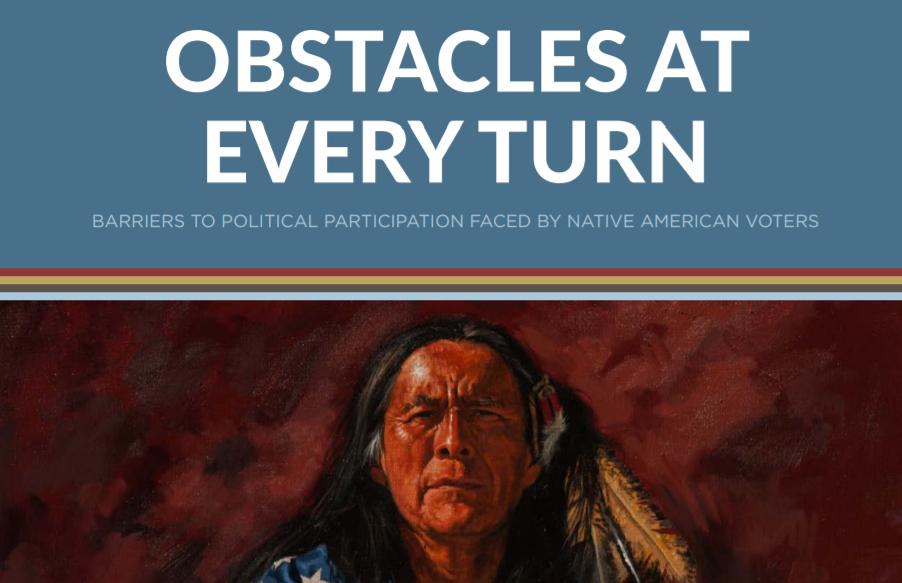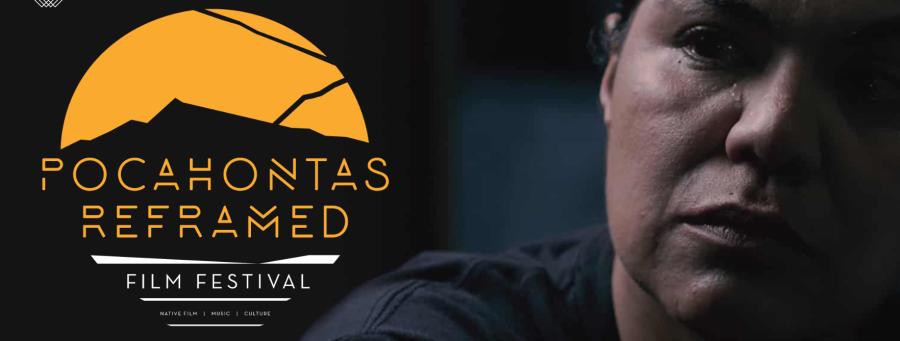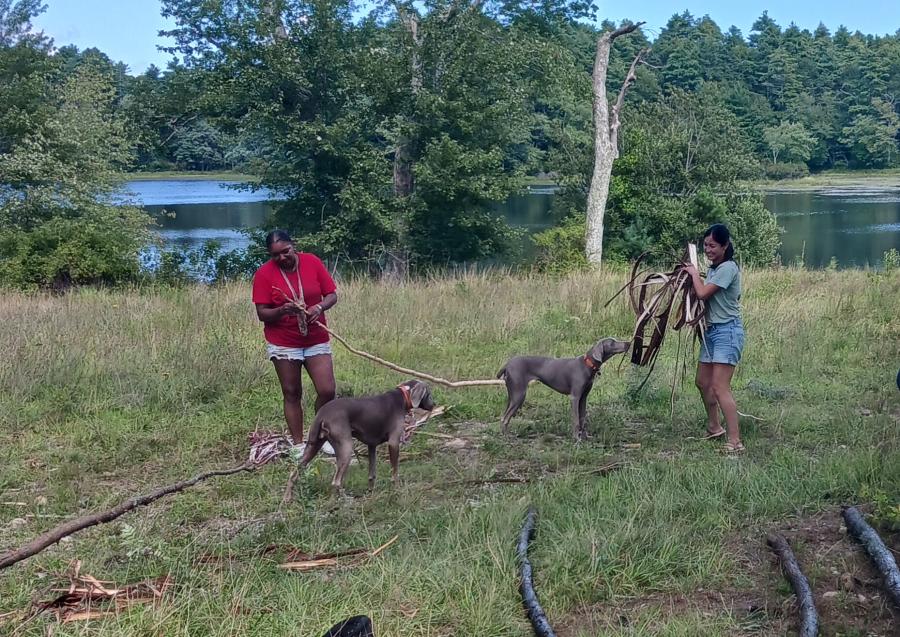
By Erica Belfi
On June 4, 2020, launched by the Native American Rights Fund (NARF), the Native American Voting Rights Coalition (NAVRC), composed of national and local grassroots organizations, attorneys, and academics, published a report titled “Obstacles at Every Turn: Barriers to Political Participation Faced by Native American Voters.” The report’s purpose is to explore the barriers that Native Americans must overcome to participate in non-Native political processes. The Native American Voting Rights Coalition conducted a series of field hearings in seven states, interviewing 125 witnesses including Tribal leaders, community organizers, politicians, and voters from multiple Tribal Nations. By documenting Native Americans’ experiences, the coalition has created an official account of discrimination, ensuring that their struggles are acknowledged and recorded. Ultimately, these accounts can help guide public policy at all levels, encourage political participation in Native American communities, and further arm community members with knowledge of their voting rights.
While the Indian Citizenship Act of 1924 recognized Native Americans as U.S. citizens, the United States did not initially grant Native communities the right to vote. The U.S. government cited several reasons for withholding the right to vote, arguing that Native Americans did not pay property taxes, were under the guardianship of the U.S. government, were not literate in English, and were more citizens of their Tribes rather than of the state. As the report notes, historically, disenfranchisement was the strongest tool that white settlers had to keep Native Americans powerless. It was not until the Voting Rights Act was passed in 1975 - nearly 200 years after the United States proclaimed independence - that the United States enfranchised Native Americans. The act may have provided a legal basis for Native Americans to access language assistance and vote, but Native communities continue to struggle to exercise their rights.
There are at least 6.8 million Native Americans living in the United States today, though this is a conservative estimate. The report states that of the 6.8 million, 4.7 million are of voting age. However, only 66 percent of those eligible to vote are registered, leaving over 1.5 million Native people who are eligible to vote unable to do so. A series of hurdles make it difficult for Native Americans to participate in the political process. The report finds eleven general barriers that contribute to the problem: geographical isolation, physical and natural barriers, poorly maintained or non-existent roads, distance and limited hours of government offices, technological barriers and the digital divide, low levels of educational attainment, depressed socioeconomic conditions, homelessness and housing insecurity, non-traditional mailing addresses, lack of funding for elections, and discrimination. Language can also be a barrier to participation if jurisdictions fail to provide language assistance along with all voting materials.
In addition to general obstacles, Native Americans face more specific barriers to political participation throughout the voting process. Both non-traditional mailing addresses and housing insecurity make it difficult to provide proof of residence in a state or county. The report also lists several other factors that prevent Native Americans from starting the first step of registration: voter identification requirements, unequal access to online registration due to internet unavailability, unequal access to in-person registration due to immense distance, restrictions to voter registration forms, denial of voter registration opportunities due to previous convictions, voter purges, and failure to offer registration opportunities at polling places on Election Day. In response to the request to provide official documentation for identification requirements and the rejection of Tribal IDs, a member of the Milwaukee Tribe remarked: “[W]e were the first here, and we were the last to get the right to vote. We were here for thousands of years. My Tribe never moved. . . . I live a stone’s throw away from where my great grandfather was born in a wigwam. . . . this is my community. And to have these things thrown at us . . . nitpicking of these IDs and all this kind of thing, it’s like we have to prove that we’re able to vote in a system that’s being pressed on us.”
Even if residents succeed in registering to vote, they may face further challenges in casting their ballots. The report states that limited funding and resources lead election officials to provide inadequate facilities and equipment to Native communities. In order to avoid difficulties that come with voting by mail, distant in-person voting, or early voting, Native leaders may advocate for polling places near or in Native communities but are often met with resistance. The report outlines ways in which state laws create arbitrary population thresholds in order for communities to qualify for their own polling place. Furthermore, “election officials will use the [Americans with Disabilities Act] as a pretext to close existing polling places or to deny new ones ... on Tribal lands”, the report states, even though Tribes may have a system in place for accommodating members with disabilities, such as curbside voting. A lack of Native American election workers, lack of pre-election outreach, and overall cultural and political isolation all contribute to hesitancy or inability to cast a ballot.
Throughout the report, many Native Americans expressed their distrust in the political system: “... it is impossible to fully understand voting barriers in Indian Country without examining the traumatic relationship Native Americans have had, and continue to have, with these governments. Antipathy and distrust persist because of past and ongoing actions that discriminate against Natives.” Native Americans struggle to have their votes counted. The report cites the lack of ballot canvassing opportunities, failure to count ballots cast out-of-precinct, and bans on ballot harvesting as reasons for how election officials may try to actively prevent Native Americans from distributing forms and returning their votes. Having to rely on occasionally uninformed election workers and their subjective decisions on whether voters’ signatures match on their forms means that many ballots are rejected. By rarely giving Native Americans a chance or time to defend their ballots or correct errors, the report suggests that election officials can regularly disenfranchise eligible voters.
States may attempt to further reduce Native American voting strength by redistricting. Officials can draw district lines to emulate ‘packing’, or where Native voters are placed “into one or only a few districts so that the remaining districts are easier for [non-Natives] to control,” states the report. States may also divide Native voters, breaking up their communities into multiple districts to weaken their voting bloc’s power and allow non-Native groups to dominate elections. Through the unequal access to resources for Native American candidates and dilution of Native American voices, non-Native government forces do not always allow Native communities to represent themselves.
Native American participation and representation matters. The report concludes that despite the attempts to exclude Native voices, renewed political participation in non-Tribal offices can help Native communities by securing their self-determination, land rights, water rights, health care, and improving their socioeconomic status. Eliminating the barriers that Native Americans face in voting and political participation can help bridge Native communities and non-Native governments while preserving Tribal sovereignty, empowering Native American voices moving forward.



